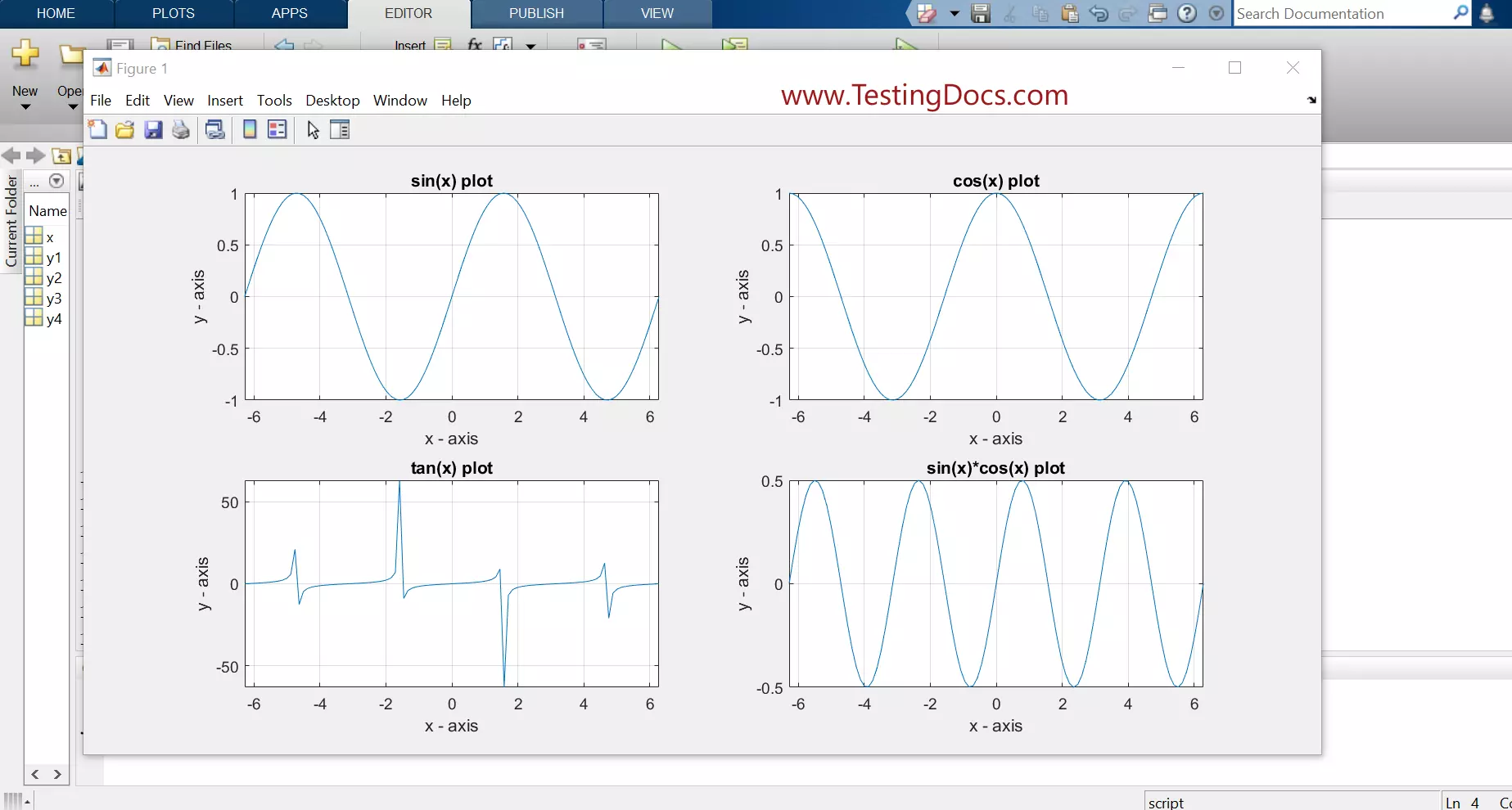

There might be other axes objects in your figure if it's more than just a simple plot. The condition of the empty tag is to exclude the axe handles of legends, whose tag will be legend. The first line finds all the objects under figure_handle of type "axes" and empty tag (''). % find all axes handle of type 'axes' and empty tagĪll_ha = findobj( figure_handle, 'type', 'axes', 'tag', '' ) If there are many subplots, and collecting their axes handle one by one does not seem a clever way to do the job, you can find all the axes handle in the given figure handle by the following commands figure_handle = figure Subplot helps to display multiple axes in a Figure and used to divide the figure in a specific way.

To create plots that have multiple rows or columns, we used a subplot statement. You should be able to zoom in all the subplots simultaneously Matlab multiple plots are used to shows the data in different ways such as Line Plots, Discrete Data Plots, and many more. Plot(+10) % Plot random stuff here as an example Ha(2) = subplot(2,1,2) % get the axes handle when you create the subplot Plot() % Plot random stuff here as an example Following is a quick example for your case ha(1) = subplot(2,1,1) % get the axes handle when you create the subplot While creating Python visualizations, you will often encounter situations where your subplots have axis labels that overlap one another.Use linkaxes as Yair and Amro already suggested. title ( 'Citric Acid plotted against Fixed Acidity' ) title ( 'Total Sulfur Dioxide plotted against Fixed Acidity' ) title ( 'Density plotted against Fixed Acidity' ) title ( 'Alcohol plotted against Fixed Acidity' ) title ( 'Quality plotted against Fixed Acidity' )

title ( 'Chlorides plotted against Fixed Acidity' ) When it reaches the end of a row, it will move down to the first entry of the next row.Ī few examples of selecting specific subplots within a plot grid are shown below: It starts at 1 and moves through each row of the plot grid one-by-one. The nrows and ncols arguments are relatively straightforward, but the index argument may require some explanation. Number of rows/columns of the subplot grid.

We can create subplots in Python using matplotlib with the subplot method, which takes three arguments:
SUBPLOT MATLAB HOW TO
How To Create Subplots in Python Using Matplotlib We will work through the process of creating subplots step-by-step through the remainder of this lesson. figure subplot dimension n1 2 number of rows n2 3 number of columns These values would define the space between the graphs if equal to 1 there will be no space between graphs nw 0.9 normalized width nh 0.9 normalized height for k1 1:n1 for k2 1:n2 subplot(n1,n2,(k1-1)n2 + k2. title ( 'Facebook (FB) Stock Price' ) #Plot 4 Here an example of using subplot in a for loop. title ( 'Amazon (AMZN)) Stock Price' ) #Plot 3 title ( 'Alphabet (GOOG) (GOOGL) Stock Price' ) #Plot 2 Google = tech_stocks_data Īmazon = tech_stocks_data įacebook = tech_stocks_data sort_values ( 'Period', ascending = True, inplace = True )


 0 kommentar(er)
0 kommentar(er)
